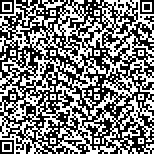下载中心
优秀审稿专家
优秀论文
相关链接
摘要

高光谱遥感影像波段众多、相关性强,导致其实际分类应用计算量大且存在明显的“维数灾难”问题。本文提出加权概率原型分析方法来研究高光谱影像的波段选择问题。该方法考虑波段间的差异性,引入综合差异性度量指标来构造权重矩阵以改进传统原型分析模型;考虑稀疏系数的狄利克雷分布和高光谱成像过程的量子特性,引入贝叶斯框架理论来构建波段选择的优化模型。加权概率原型分析方法采用迭代优化的策略,利用交替方向乘积方法来依次求解两个凸优化子问题来得到局部最优的稀疏系数矩阵并实现波段子集的最优估计。基于两个公开的高光谱数据集,对比4种主流的波段选择方法(SpaBS、SNMF、ISSC、SSR)来验证提出方法的可靠性。实验结果表明,加权概率原型分析方法的总体分类精度高于其他4种方法,能够得到更好的分类结果图。本文提出的加权概率原型分析模型能够选择合适的波段子集来满足高光谱影像的高精度分类需求。
Hyperspectral imaging collects both spectral signals and images of ground objects on the Earth's surface using hundreds of narrow bands. It has become a powerful technique for air-to-land observation. Unfortunately, numerous bands and strong intra-band correlations bring about information redundancy and heavy computational burdens for hyperspectral imagery (HSI) classification. Moreover, the “Hughes” problem traps the HSI data into a conflict between a high classification accuracy and an improbably large number of training samples. Therefore, proper bands should be selected from original hyperspectral data to reduce the high computations while achieving superior classification accuracies.In this study, a Weighted Probabilistic Archetypal Analysis (WPAA) method is proposed to extract proper bands from HSI data. WPAA considers the differences between pairwise bands and adopts a composite dissimilarity measure to construct a weighted matrix. This method improves the regular archetypal analysis by using the constructed weighted matrix in hyperspectral bands. Thereafter, the method considers the Dirichlet distribution of sparse coefficients and the quantum nature of hyperspectral imaging. It also introduces the Bayesian framework to construct its mathematical model for band selection. WPAA implements an iterative optimization scheme, transforms unconvex problems into two convex subproblems, and utilizes the Alternating Direction Method of Multipliers (ADMM) to estimate two sparse coefficient matrices. ADMM introduces proper auxiliary variables to augment the constraints in the objection function of WPAA, iteratively minimizes the Lagrangian function with respect to the primal variables, and maximizes it with respect to the Lagrange multipliers. The iteration procedure of two sparse coefficient matrices is repeated until the convergence conditions are satisfied or the number of iterations exceeds the predefined maximal number of iterations. The proper band subset is finally estimated using the sparse reconstruction equation.Two groups of classification experiments on the popular HSI datasets of PaviaU and Urban were designed to carefully test the performance of WPAA in band selection. Four state-of-the-art methods were compared against the proposed WPAA method, i.e., the sparse-based band selection, sparse nonnegative matrix factorization, improved sparse subspace clustering, and sparse self-representation. Experimental results show that WPAA achieves better overall classification accuracy than the other four state-of-the-art methods. WPAA could also obtain the best classification map regardless of the different sizes of the band subset and different training samples. The proposed composite dissimilarity weighted matrix makes great contributions to the improvement of the classification accuracy of the PAA model.WPAA could help select the proper bands for hyperspectral images, and it can serve as a good alternative for dimensionality reduction in hyperspectral image classification.

